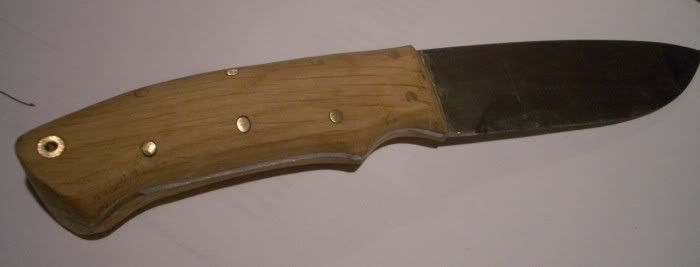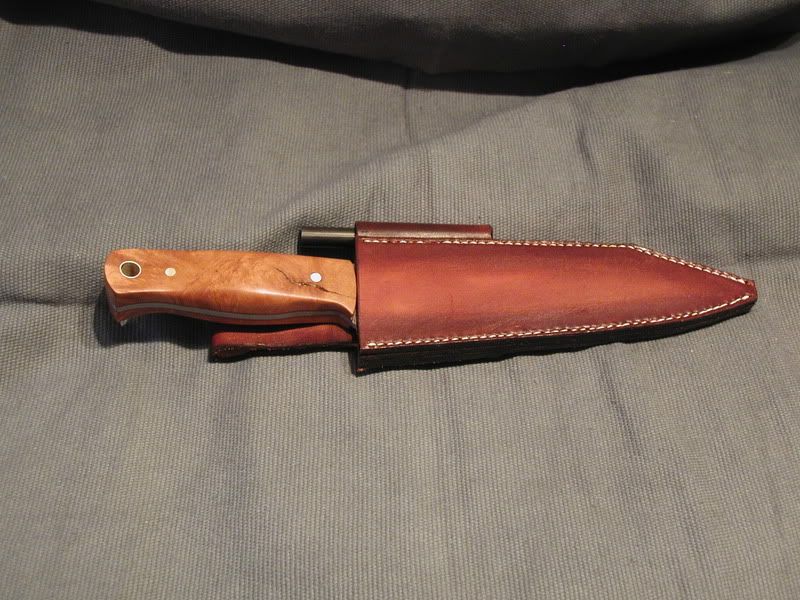Finally managed to get a drum sander for me drill and got down to work on my knife. The blade is a blank that chris claycomb gave me..quite a while ago (thanks so much!)..and it's been mainly fright which has put me off! Learnt a lot so far (i.e. how NOT to put the pins through the handle - will use less pins next time or bolts!). I even had to make a half-wave rectifier to slow the drill down for the smaller drums so I learnt some electronics too!
Some areas which I would like to improve: namely neater glueing, perhaps some sort of plastic layer inbetween the wood and metal, and to extend the handle right up to, or nearer to, the cutting edge.
The wood is oak (whilst the grain might not be as spectacular as some, it has a nice charm to it) and the knife a windriver or something. I have shaped it to what feels right in my hand so far (I have big hands so it is quite thick), and think I will sharpen it up and see how it carves then maybe take some more wood off. But it has a nice contour anyway (thanks Rapidboy tutorial).
So if anybody has any advice on sharpening it from completely blunt to hair shaving I would be appreciated. I was considering using an angle grinder (please forgive me) but then decided it would be awkward trying to keep the temperature down so perhaps some sort of file? Or just hours on my oilstone?
Also need to polish the blade a tad and of course oil the handle. Linseed oil ok?
Bring on the next project! (probably a sheath by the looks of it)



Some areas which I would like to improve: namely neater glueing, perhaps some sort of plastic layer inbetween the wood and metal, and to extend the handle right up to, or nearer to, the cutting edge.
The wood is oak (whilst the grain might not be as spectacular as some, it has a nice charm to it) and the knife a windriver or something. I have shaped it to what feels right in my hand so far (I have big hands so it is quite thick), and think I will sharpen it up and see how it carves then maybe take some more wood off. But it has a nice contour anyway (thanks Rapidboy tutorial).
So if anybody has any advice on sharpening it from completely blunt to hair shaving I would be appreciated. I was considering using an angle grinder (please forgive me) but then decided it would be awkward trying to keep the temperature down so perhaps some sort of file? Or just hours on my oilstone?
Also need to polish the blade a tad and of course oil the handle. Linseed oil ok?
Bring on the next project! (probably a sheath by the looks of it)




